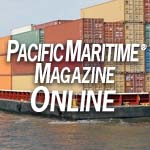Approximately $671.3 million and 7,000 direct jobs come from commercial fishing facilities on port property, while almost $729 million and more than 3,600 jobs derive from recreational boating related facilities.
“Port of Seattle properties related to fishing and recreational boating continue to thrive and anchor economic prosperity while providing over 10,000 good paying, family wage jobs in this region,” said Port of Seattle Commissioner Peter Steinbrueck. “This economic impact report confirms that these industries can continue to deliver for decades to come.”
The port owns and runs three facilities that are the regional fishing industry’s core assets: Fishermen’s Terminal, the Maritime Industrial Center and Terminal 91.
These are key to the North Pacific Fisheries Fleet, which include 226 vessels that harvest pollock, Alaskan king crab, groundfish, salmon, and other high value seafoods.
“Commercial fishing continues to provide economic benefits across our region and Alaska,” said Bob Alverson, executive director of the Fishing Vessel Owners Association. “Port facilities like Fishermen’s Terminal anchor this thriving industry from here to the Bering Sea.”
In 2017, about $455 million – 44 percent of all gross earnings from the North Pacific Fisheries – came from Port of Seattle vessels that fished in Alaska.
Meanwhile, the port has four recreational marinas: Shilshole Marina, Harbor Island Marina, Salmon Bay Marina, and Bell Harbor Marina. The biggest one, Shilshole, can accommodate more than 1,400 vessels.
“Recreational boating is a proven job creator and economic driver for our region,” said Vice President and Director of Government Affairs for the Northwest Marine Trade Association Peter Schrappen. “Providing more than 3,600 jobs in our area, marinas are great for our economy as well as a great place to spend time this summer on the water.”

